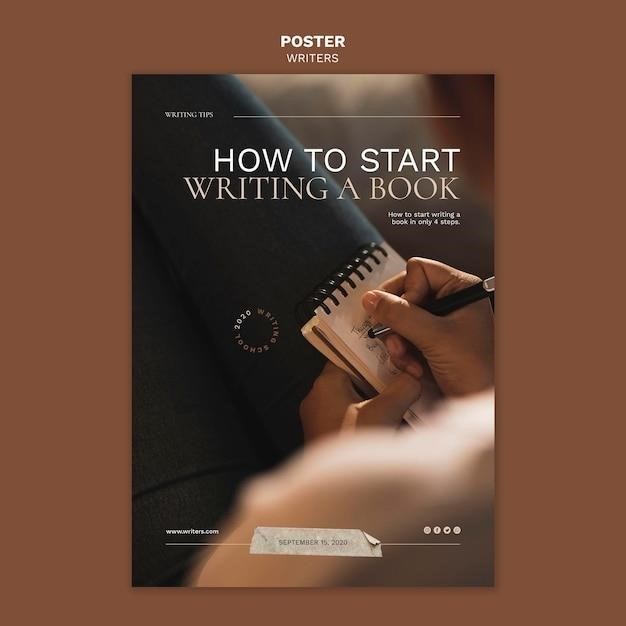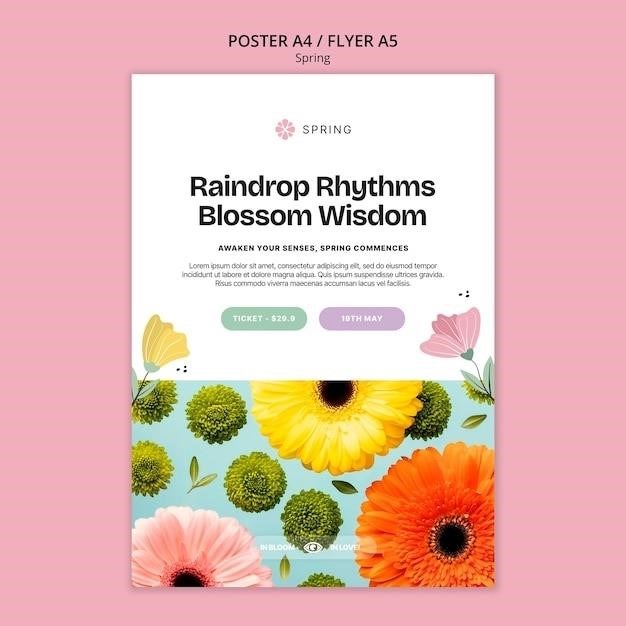craftsman t110 manual pdf
Craftsman T110 Manual PDF⁚ A Comprehensive Guide
This comprehensive guide will provide you with all the information you need to find, download, and use the Craftsman T110 manual PDF. Whether you need to troubleshoot an issue, find parts, or simply understand how to operate your riding mower, this guide has you covered.
Introduction
The Craftsman T110 is a popular riding lawn mower known for its reliability, ease of use, and powerful performance. This manual is your essential guide to understanding and operating your Craftsman T110. It contains detailed instructions, diagrams, and troubleshooting tips to help you get the most out of your mower and keep it running smoothly. Whether you’re a seasoned lawn care enthusiast or a first-time mower owner, this manual will equip you with the knowledge you need for safe and efficient operation. From starting and stopping the engine to performing routine maintenance, this manual covers all aspects of your Craftsman T110; It also includes valuable information on troubleshooting common problems, identifying and replacing parts, and ensuring the longevity of your mower.
Take the time to read through this manual carefully. Understanding the instructions and safety precautions is crucial for your safety and the proper operation of your Craftsman T110. By following the guidelines provided, you can enjoy years of reliable performance from your mower, ensuring a well-maintained lawn and a satisfying mowing experience.
Craftsman T110 Model Overview
The Craftsman T110 is a powerful and versatile riding lawn mower designed for homeowners with larger lawns. It features a 42-inch cutting deck, providing efficient mowing for areas up to 1.5 acres. The T110 is equipped with a Briggs & Stratton single-cylinder engine, known for its reliability and easy starting. It offers a 7-speed manual transmission, allowing you to select the appropriate speed for different terrain and mowing conditions.
The T110’s design emphasizes user comfort and maneuverability. It features a low-back seat for a comfortable ride, and its 18-inch turning radius allows for easy navigation around obstacles. Turf Saver wheels are designed to minimize damage to your lawn while providing excellent traction. The T110 also offers optional mulching capabilities, allowing you to finely chop grass clippings and return them to the lawn as fertilizer.
Overall, the Craftsman T110 is a reliable and user-friendly riding mower that combines power, comfort, and maneuverability to make lawn care easier and more efficient. Its durable construction and robust features make it a great choice for homeowners seeking a dependable and long-lasting lawn mowing solution.

Key Features of the Craftsman T110
The Craftsman T110 is packed with features that make it a reliable and user-friendly choice for homeowners. Here are some of its key highlights⁚
- Powerful Briggs & Stratton Engine⁚ The T110 is powered by a 17.5 HP Briggs & Stratton single-cylinder engine, ensuring efficient and reliable performance for various mowing conditions. Its easy-start capability makes it convenient to get started.
- Durable Cutting Deck⁚ The 42-inch reinforced stamped steel deck is designed to withstand the rigors of regular use and provides ample cutting width for efficient mowing.
- 7-Speed Manual Transmission⁚ The T110 offers a 7-speed manual transmission, giving you control over your mowing speed for different terrains and grass types.
- Comfortable Low-Back Seat⁚ The T110 includes a low-back seat for a comfortable ride, even during extended mowing sessions.
- Maneuverability⁚ The T110’s 18-inch turning radius and Turf Saver wheels make it easy to navigate around obstacles and minimize damage to your lawn.
- Optional Mulching Kit⁚ The T110 offers an optional mulching kit, allowing you to finely chop grass clippings and return them to the lawn as fertilizer.
These features contribute to the T110’s reputation for power, durability, and ease of use, making it a popular choice for homeowners with larger lawns.
Where to Find the Craftsman T110 Manual PDF
Finding the Craftsman T110 manual PDF can be a bit of a journey, but several resources are available to help you get your hands on this essential document. Here’s a breakdown of your options⁚
- Craftsman Website⁚ Start your search on the official Craftsman website. While their website might not directly host the T110 manual, it often provides links to their support resources or a dedicated section for manuals.
- Sears Parts Direct⁚ Since Craftsman is a brand owned by Sears, their parts website, Sears Parts Direct, is another potential source. They often have a section for manuals and parts diagrams for various Craftsman products, including lawn mowers.
- ManualsOnline⁚ ManualsOnline is a comprehensive online platform dedicated to providing user manuals for various products, including lawn and garden equipment. Search for “Craftsman T110” on their website to see if they have the manual available.
- Lowe’s Website⁚ Lowe’s, a major retailer that sells Craftsman products, might have a section on their website where they provide downloadable manuals for products they carry. Check their website for potential access to the T110 manual.
- Google Search⁚ A simple Google search for “Craftsman T110 manual PDF” can yield a range of results, including links to websites that host manuals or forums where users share their copies.
- Online Forums and Communities⁚ Consider checking online forums and communities dedicated to lawn and garden equipment or Craftsman products. Users often share resources and information, including links to manuals, on these platforms.
Remember to always verify the authenticity of any downloaded manual and ensure it matches the specific model number of your Craftsman T110.
Downloading and Accessing the Manual
Once you’ve located the Craftsman T110 manual PDF, you’ll need to download and access it. Here are some common methods and things to keep in mind⁚
- Direct Download⁚ Many websites offer direct downloads of manuals. Look for a “Download” button or a link that says “PDF” or “User Manual.” When downloading, ensure your device has enough storage space and that the file is coming from a reputable source.
- Online Viewing⁚ Some websites might allow you to view the manual online without downloading it. This can be convenient if you only need to quickly reference a specific section. Look for a “View Online” option or a page that displays the manual directly.
- PDF Reader⁚ You’ll need a PDF reader to open and view the downloaded manual. Most computers and mobile devices come with built-in PDF readers. If not, you can download a free PDF reader like Adobe Acrobat Reader or Foxit Reader.
- Printing⁚ If you prefer a printed copy, you can print the manual from your PDF reader. Choose the “Print” option and adjust settings like paper size and orientation as needed. Consider printing in grayscale to save ink.
- Saving the Manual⁚ Once you’ve downloaded the manual, save it to a designated folder on your computer or device for easy access. This ensures you’ll have it readily available when needed.
Remember, always double-check that the downloaded manual is for the correct Craftsman T110 model number to avoid confusion and ensure you have the right instructions and information.
Troubleshooting and Repair Information
The Craftsman T110 manual PDF often includes a dedicated section for troubleshooting common issues and providing basic repair guidance. This section is invaluable for addressing minor problems before seeking professional assistance; You might find information on topics like⁚
- Engine Starting Problems⁚ The manual might offer solutions for issues such as the engine failing to start, starting but then dying, or struggling to turn over. It might suggest checking fuel levels, spark plugs, air filters, and battery connections.
- Cutting Deck Problems⁚ The manual could cover issues with the cutting deck, such as uneven cutting, blade problems, or deck height adjustments. It might provide steps for checking and adjusting the blades, ensuring proper deck height, and identifying potential obstructions.
- Transmission Problems⁚ The manual may address issues with the transmission, such as difficulty shifting gears, slipping gears, or unusual noises. It might offer guidance on checking fluid levels, adjusting the transmission, and identifying potential wear and tear.
- Electrical Issues⁚ The manual could provide troubleshooting tips for electrical problems like headlights not working, faulty switches, or problems with the ignition system. It might suggest checking wiring connections, fuses, and battery terminals.
- General Maintenance⁚ The manual might offer a comprehensive guide to routine maintenance tasks, such as changing the oil, replacing the air filter, cleaning the spark plugs, and checking tire pressure. Following these guidelines can help prevent more serious issues and ensure optimal performance.
While the manual provides valuable information, it’s important to remember that it’s not a substitute for professional repair. For more complex issues, consult a qualified mechanic or refer to the engine manufacturer’s service manual for specific engine repair information.
Craftsman T110 Parts and Accessories
The Craftsman T110 manual PDF often includes a section dedicated to parts and accessories, providing valuable information for maintaining and customizing your riding mower. This section might include⁚
- Parts Diagrams⁚ Detailed diagrams of the T110’s components, including the engine, transmission, cutting deck, and other systems, can be found in the manual. These diagrams help you identify specific parts and their locations, making it easier to order replacements or perform repairs.
- Parts Lists⁚ The manual might list the parts that are commonly replaced or repaired, including engine parts, blade assemblies, filters, belts, and other consumables. This list helps you locate the specific parts you need for maintenance or repair.
- Accessory Information⁚ The manual may provide information on available accessories for the T110, such as mulching kits, blade sharpeners, grass catchers, and other attachments. This information can help you enhance the functionality and performance of your riding mower.
- Where to Find Parts⁚ The manual might provide guidance on finding parts for your T110, including online retailers, local hardware stores, and authorized Craftsman service centers. This information helps you locate the parts you need conveniently and efficiently.
- Part Numbers⁚ The manual often includes part numbers for specific components, making it easier to order replacement parts accurately. This information is essential for ensuring that you get the correct parts for your T110.
By utilizing the parts and accessories information in the manual, you can ensure you have the right components for repairs, upgrades, or customizations, keeping your Craftsman T110 running smoothly and efficiently.
Safety Precautions and Maintenance
The Craftsman T110 manual PDF places significant emphasis on safety precautions and regular maintenance to ensure your riding mower operates reliably and minimizes the risk of accidents. This section typically covers⁚
- Pre-Operation Checks⁚ The manual outlines essential checks to perform before starting the T110, including inspecting the fuel level, engine oil, tire pressure, and blade condition. These checks help identify potential issues and prevent accidents during operation.
- Safety Rules⁚ The manual emphasizes crucial safety rules, such as wearing appropriate clothing, using safety glasses and hearing protection, avoiding distractions, and keeping children and pets away from the operating area. These rules are essential for minimizing the risk of injuries.
- Operating Instructions⁚ The manual provides detailed instructions on operating the T110 safely and efficiently, covering aspects like starting and stopping the engine, using the controls, and maneuvering the mower. This information ensures proper use and reduces the likelihood of accidents.
- Maintenance Schedule⁚ The manual includes a recommended maintenance schedule outlining regular tasks like changing oil, cleaning air filters, sharpening blades, and inspecting belts. Following this schedule helps keep the T110 in top condition, preventing potential breakdowns and ensuring longevity.
- Emergency Procedures⁚ The manual provides guidance on handling emergencies, including engine stalls, blade malfunctions, and other unexpected situations; This information helps you respond appropriately and minimize the risk of injury or damage.
By adhering to the safety precautions and maintenance recommendations in the manual, you can ensure the safe and efficient operation of your Craftsman T110 riding mower.
















